#Jamestown S'Klallam Tribe
Photo

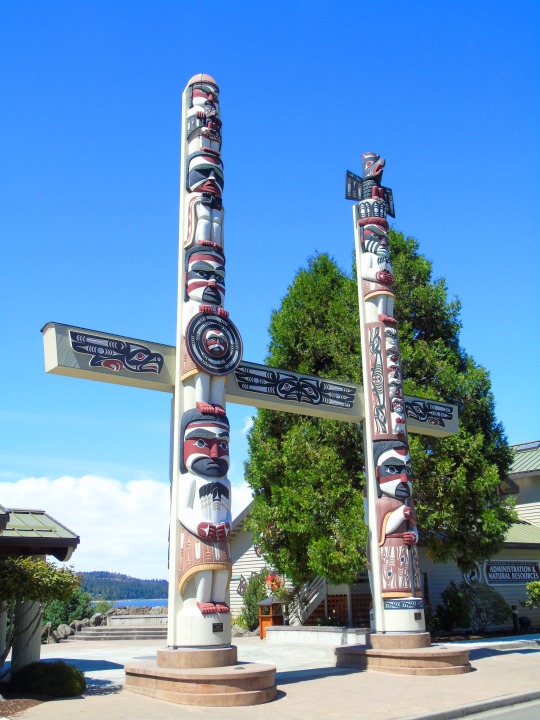


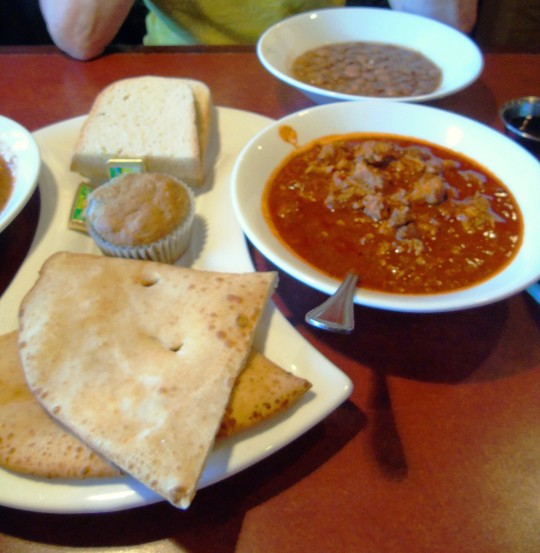


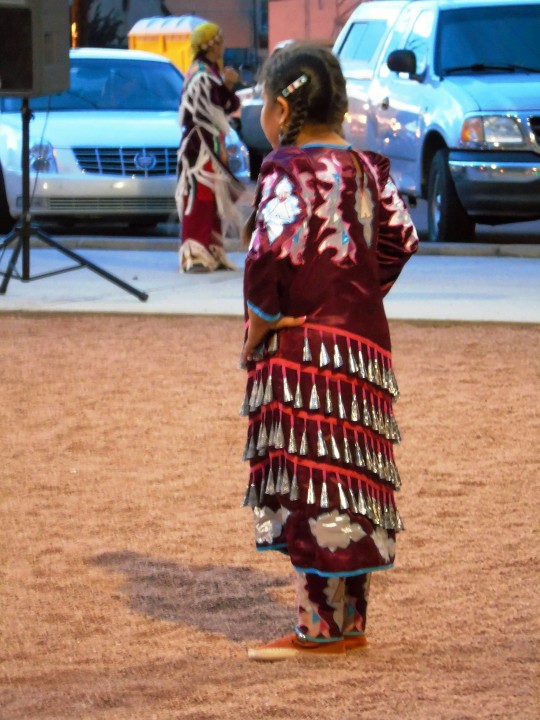


International Day of The World's Indigenous People
The International Day of the World’s Indigenous People on August 9 pays tribute to the indigenous communities of the world. The latest data reveals that there are about 370 to 500 million indigenous people living in 90 countries. These communities are noted to have their own unique set of languages, traditions, cultures, and governing systems. For many indigenous groups, the systems that their ancestors have followed for centuries have stood the test of time by serving them with positive outcomes to date. Many indigenous people’s special bond and connection with nature have also led to the protection of the general environment. However, on the other side, several indigenous communities face difficulties due to a central government’s covert and overt attempts to control their lives. This has led to indigenous people’s rights violations where they would have otherwise ensured peaceful and harmonious lives for them.
History of International Day of The World's Indigenous People
The first International Day of the World’s Indigenous People was officially celebrated in August 1995. The day had been brought into existence when the 49/214 resolution was passed by the U.N. General Assembly on December 23, 1994. August 9 was chosen as the commemorative date because that was when the first meeting of the U.N. Working Group on Indigenous Populations of the Sub-Commission on the Promotion and Protection of Human Rights was held. Every year, the day is honored by governments and organizations holding education forums and conferences to meet and discuss the social issues faced by indigenous groups worldwide. People are also given information on any ongoing and/or upcoming activities and projects that are being undertaken to help the target communities. Every year, the theme changes to shed light on a pressing topic, and the theme for the year 2021 was ‘Leaving no one behind: Indigenous peoples and the call for a new social contract.’
The social contract theme is a call for accountability in the general populations’ interaction with the indigenous communities and their resources. Over the years, many indigenous groups have found themselves to be on a disadvantageous terrain in the face of urban development projects that have destroyed and denigrated their lands and territories. The central governments and builders involved in such projects never sought permission from or even spoke with the indigenous communities before they took the developmental steps. Organizations and agencies like the U.N. and UNESCO have made efforts for constitutional/legislative reforms for dominant indigenous groups. Yet, the efforts must be focussed on bringing everyone together in the cause, leaving none behind.
International Day of The World's Indigenous People timeline
1982 First U.N. Meeting on Indigenous People
The U.N. holds the first meeting on indigenous people by forming the U.N. Working Group on Indigenous Populations of the Sub-Commission on the Promotion and Protection of Human Rights.
1995 International Day of the World’s Indigenous People
The first International Day of the World’s Indigenous People is celebrated by the U.N. General Assembly.
2005 - 2015 Indigenous People’s Decade
The U.N. proclaims 2005 to 2015 to be the ‘Decade of Action and Dignity’ for the indigenous communities.
2019 Indigenous Languages Year
After a startling 2016 report on the danger of more than 2,000 indigenous becoming extinct, the U.N. declares 2019 to be the International Year of Indigenous Languages in order to create awareness.
How To Observe International Day of the World’s Indigenous People
Learn about indigenous groups
Learn an indigenous language
Stand by indigenous groups
History related to indigenous people is always interesting to read and learn about. They have their own sets of beliefs, customs, languages, and cultures. Their daily lifestyles are also often connected with nature, be it animals, trees, certain plants, or lakes/rivers.
The U.N. declared the years 2022 to 2032 the decade for indigenous languages. The goal is to bring to attention the dying languages, since most of them are not taught in schools or are used by the general public. Losing a language is losing an important facet of the history and culture of a people.
The best way to celebrate this day and the rest of the year is by vowing to stand by indigenous groups. The indigenous people have the right to freely choose however they wish to live, much like any other living being on this planet. Protecting their rights also in turn protects your rights in the long run.
5 Interesting Facts About Indigenous People
80% of the world’s biodiversity
4,000 indigenous languages
High poverty rates
Short life spans
Leaders in protecting the environment
Around 80% of the world’s biodiversity is in places where indigenous groups are living.
The 5,000 indigenous communities in the world are credited with having about 4,000 languages.
While the indigenous communities account for only 5% of the world’s population, they make up 15% of the world population that is living in poverty.
Indigenous communities, due to a lack of awareness, have shorter life spans as they die of preventable diseases like malaria and H.I.V.
Studies have shown that the fauna and flora, and biodiversity thrive and flourish where indigenous people reside.
Why International Day of the World’s Indigenous People is Important
It’s a celebration of indigenous people
It’s a celebration of indigenous languages
It’s a celebration of the freedom to live
Indigenous people form an essential and crucial part of not only our planet’s history, but also how human beings have come to make systems to lead fruitful lives. The indigenous people’s cultures, customs, and traditions are interesting to learn about for their uniqueness and for what they teach us about the universe and the bigger picture.
Language, at its core, builds the identity of a people. The involvement of the different phonetics, grammar rules, and formal/informal styles can tell one a lot about where a community has come from, and how their history has shaped them. The same is the case with indigenous languages. The problem lies in their endangerment, and this is why we must strive to preserve them.
The freedom to practice our rights on a piece of land that has shaped our communities for centuries should not be taken away from anyone. The freedom to practice our customs, traditions, and general lifestyles is another important aspect of living a worthwhile life. For these very reasons and many others, we should join indigenous people in their right to live and flourish however they like.
Source
#Wabanki Canoe#International Day of the World’s Indigenous People#USA#9 August#original photography#native american#Washington#Main#travel#vacation#Canada#Founding Fathers by Dale Faulstich#Jamestown S'Klallam Tribe#Anishinaabe Scout by Hamilton MacCarthy#Ottawa#Vancouver#Klahowya Village#Montezuma Castle National Monument#native american food#Navajo#Diné#El Castillo#Chichén Itzá#Mexico#Lower Fort Garry National Historic Site of Canada#The Gather-Ring by Manuel Báez and Charlynne Lafontaine#InternationalDayofTheWorld'sIndigenousPeople
98 notes
·
View notes
Photo
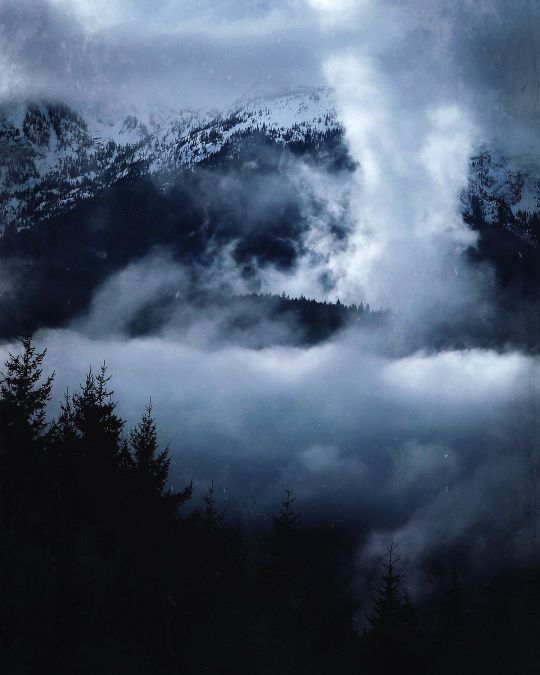
• The Wild & Majestic Olympic Mountains • What may frighten others is what draws me so deeply to the Pacific Northwest. This land is as beautiful as it is complex, dangerous, wild & diverse. Any moment one of our 161 active volcanos could erupt, the Cascadia Subduction zone fault could trigger the mega9 quake & tsunami that’ll virtually wipe the PNW off the map, or wildfires & storms could ravage the land. The allure of the incredible landscape is as diverse & precious as it is temporary. The passion I have for the plants that grow here, extends to the history & how the actual land was formed. It is so fascinating, providing endless life lessons & inspirations.. The Olympic Mountains (photo I took above) were born in the ancient sea ~50 million years ago & contain some of the most complicated geology in the world. As the land evolved; it was uplifted, bent, folded & eroded into the picturesque rugged peaks we see today. The wet primal web of the Olympic National Forest is in constant transformation. Fittingly named after the Greek Gods, these majestic glacier-covered mountains march from the Pacific coast to the heart of the Peninsula. Within them coexists the rocky alpine slopes, subalpine meadows, clear lakes, flowing waterfalls, wild rivers, lush temperate Rainforests & rugged beaches. With one of the highest levels of biomass of any place on Earth, it’s home to a rich diversity of plant & animal species, many of which are found nowhere else in the world. The Olympics are home to more Native American tribes than anywhere else. 8 reside on reservations along the coastal areas of the Peninsula are Makah, Quileute, Hoh, Quinault, Skokomish, Port Gamble S'Klallam, Jamestown S'Klallam, & Lower Elwha Klallam. Weather quickly moves from the ocean over the ridge, shrouding the mountains in fog. The glaciers of the Olympics & Cascades comprise of the most glaciated areas of the US besides Alaska. 70+ft snow falls annually on Mt. Olympus & over 150 inches of rain pours down into the mossy HoH Rainforest. Snowpack feeds the rivers, waterfalls, forests & lowland villages as it makes its way back down to the wild sea.. See history in my stories 🏔 (at Olympic Mountains) https://www.instagram.com/p/CKW66WrH-IY/?igshid=16t0pph1m9190
1 note
·
View note
Link
1 note
·
View note
Text
P2-Interactive Learning Game
Brainstorming and initial thoughts
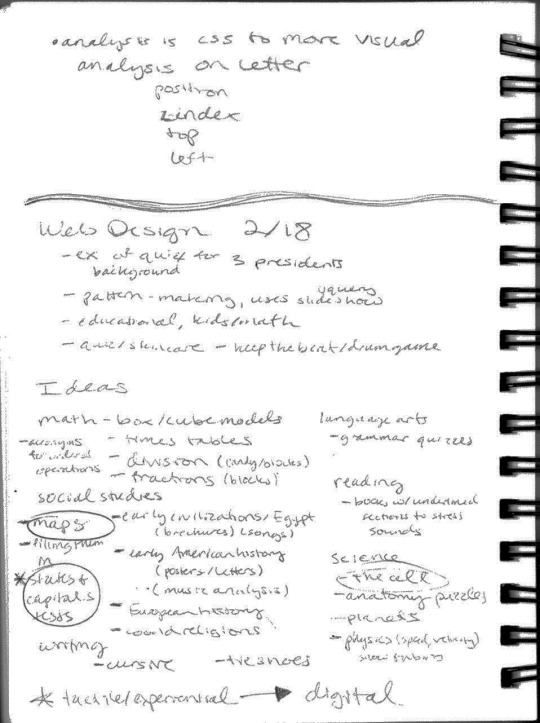

Lo-fi prototype


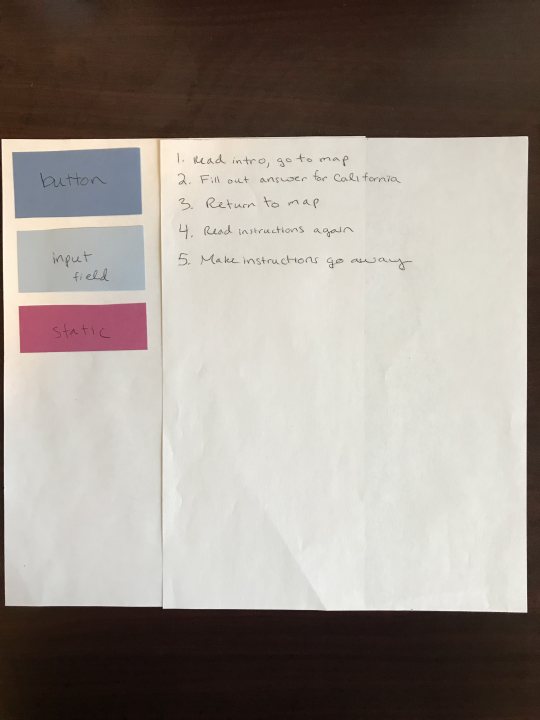
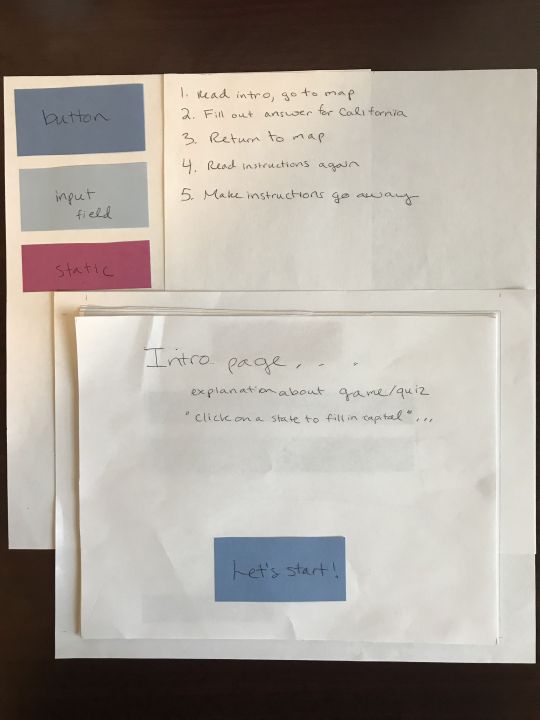
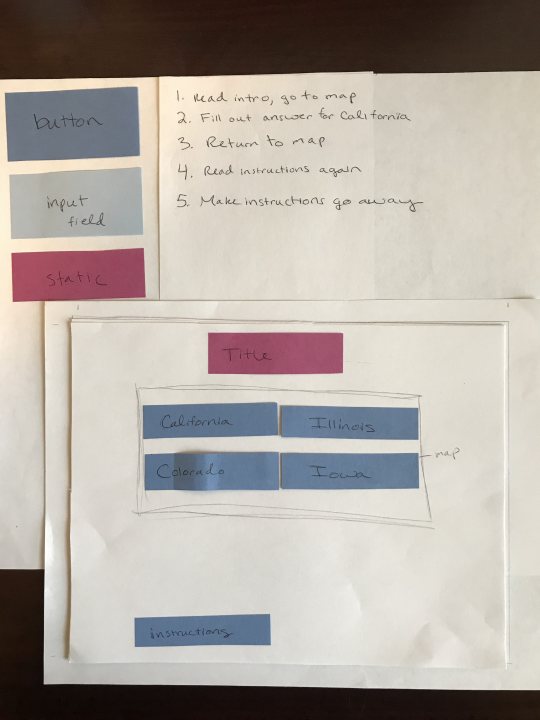
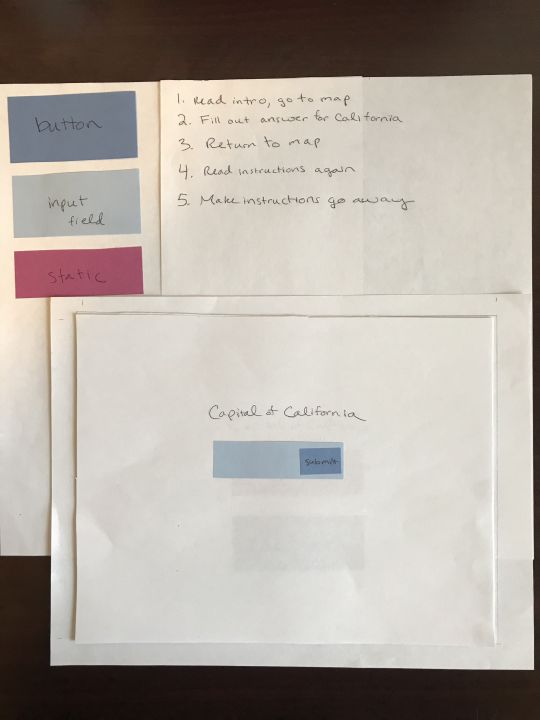
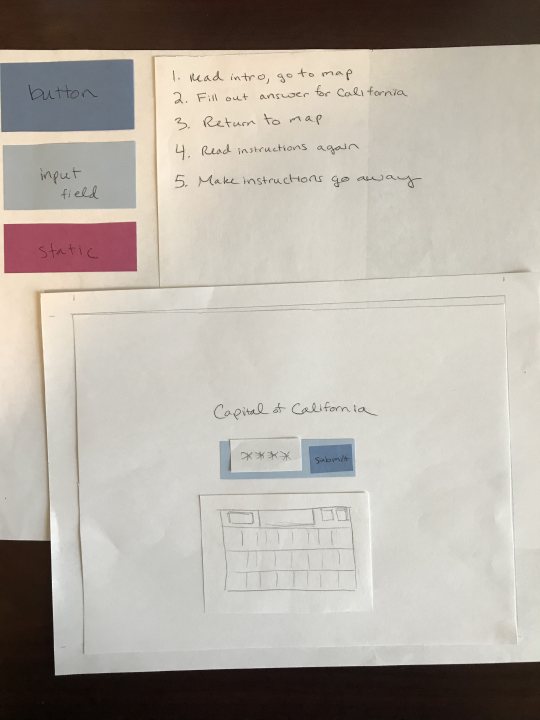
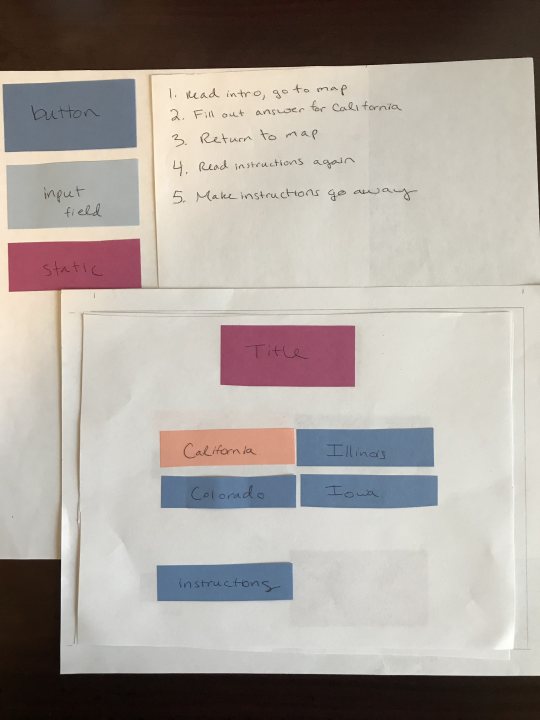
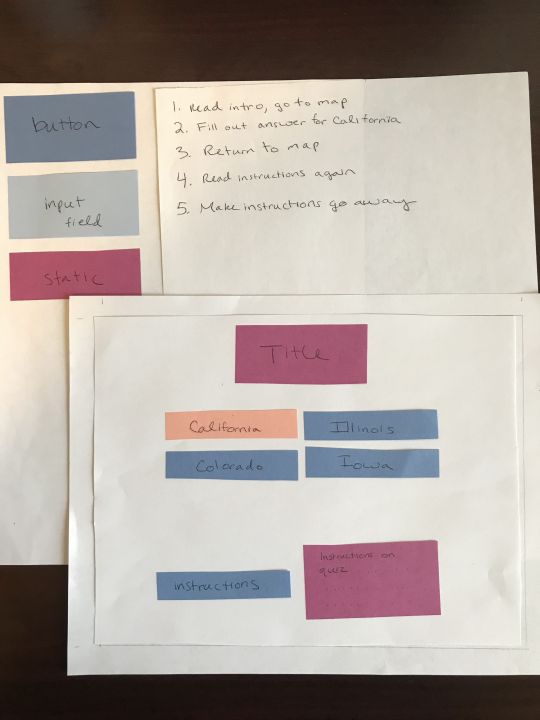
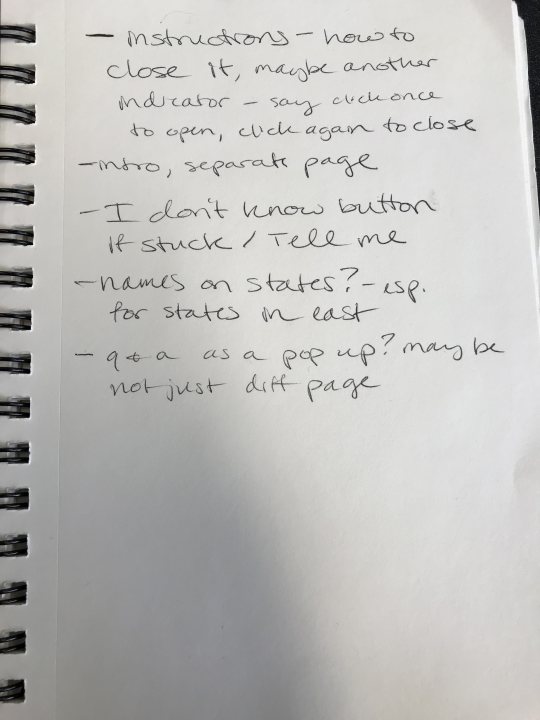
After receiving feedback from classmates and my professor, I decided to map out ten national parks with buttons instead of mapping out 50 states with buttons.
Moodboards
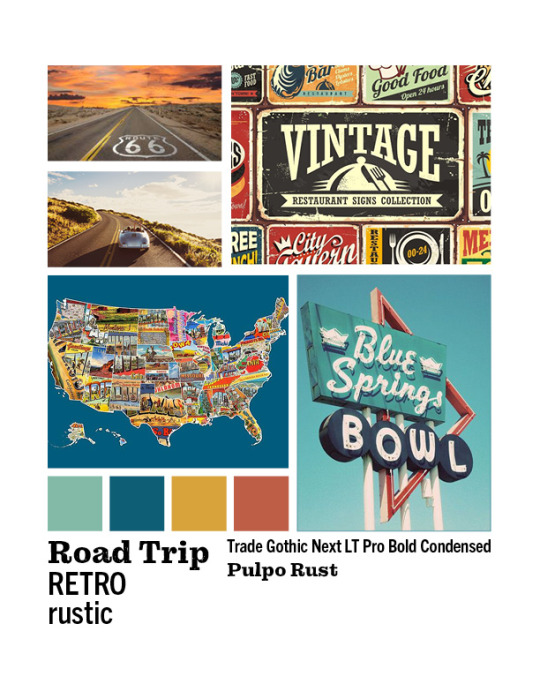
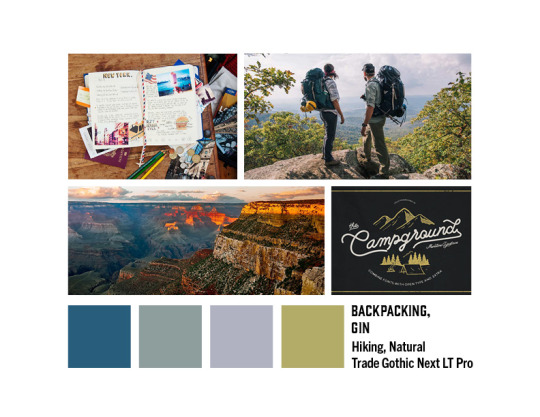
Style Tile

Static Digital Layout
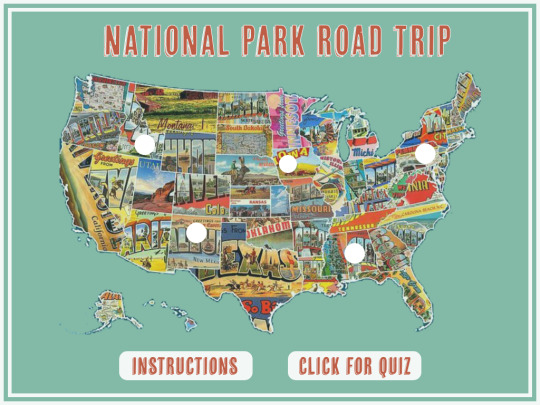

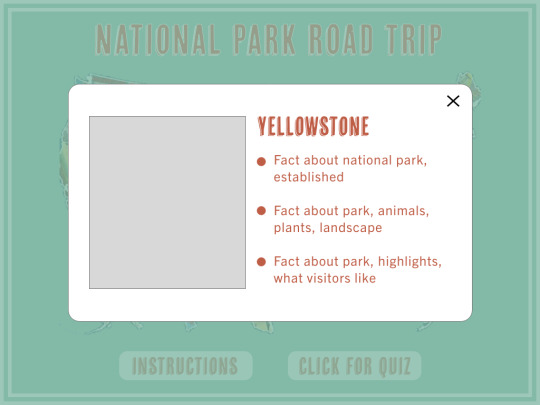
Notes


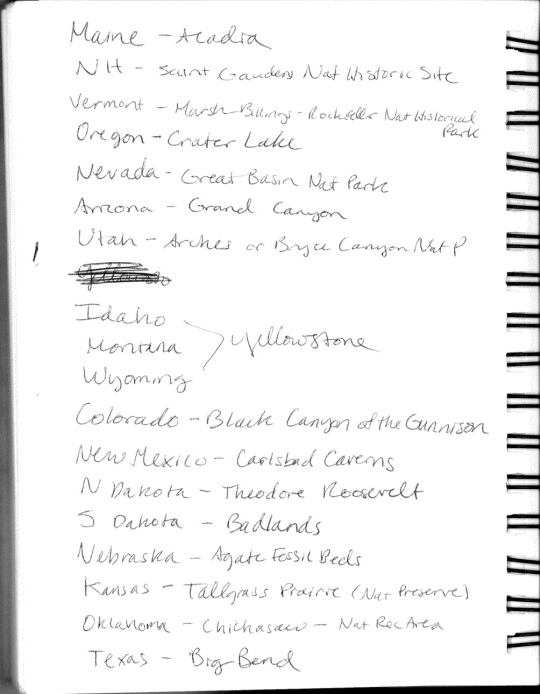
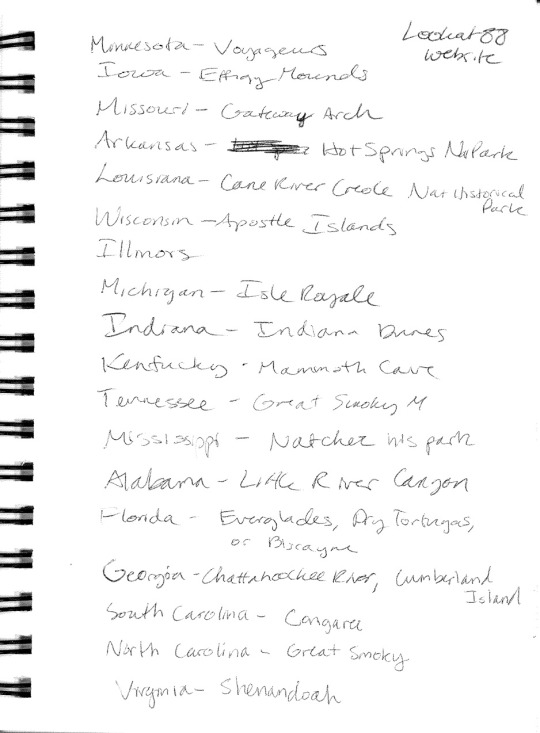


Olympic Park:
Officially national park in 1938.
Encompassing 922,651 acres, the park protects a vast wilderness, thousands of years of human history, and several distinctly different ecosystems, including glacier-capped mountains, old-growth temperate rain forests, and over 70 miles of wild coastline.
More than 1,100 species of plants live in Olympic's meadows and forests.
Just offshore, whales, dolphins, sea lions, seals, and sea otters feed in the Pacific Ocean. Invertebrates of countless shapes, sizes, colors and textures inhabit the tide pools.
Some species, like raccoons, beaver and mink, live mostly in the lowlands. Deer, elk, cougars and bears, range from valleys to mountain meadows. Park waters are home to some of the healthiest runs of Pacific salmon outside of Alaska. Over 300 species of birds live in the area at least part of the year, from tiny penguin-like rhinoceros auklets offshore to golden eagles soaring over the peaks.
Endemic species like the Olympic marmot, Olympic snow mole and Olympic torrent salamander are found here and nowhere else in the world.
Eight contemporary tribes of the Olympic Peninsula - the Hoh, Ozette, Makah, Quinault, Quileute, Queets, Lower Elwha Klallam, and Jamestown S'Klallam - have lived in this area and have strong relationships with the lands and waters within the park.
Yosemite:
Within its nearly 1,200 square miles, you can find deep valleys, grand meadows, ancient giant sequoias, a vast wilderness area, and more.
The expansive park’s 747,956 acres or 1,169 square miles, nearly 95 percent of which are designated Wilderness, are home to hundreds of wildlife species, and over a thousand plant species.
Yosemite supports more than 400 species of vertebrates, including fish, amphibians, reptiles, birds, and mammals.
Many waterfalls, specifically 2,425-foot Yosemite Falls that ranks as the tallest in North America, flowing down into the scenic Valley meadows.
Visitors can explore 800 miles of hiking trails and 282 miles of scenic roadways.
Yosemite is the nation’s 3rd national park, but it sparked the idea of national parks. Twenty-six years before it was a national park, President Lincoln signed the Yosemite Land Grant on June 30, 1864, protecting the Mariposa Grove and Yosemite Valley. It was the first time the government protected land because of its natural beauty so people could enjoy it.
Yosemite’s granite rock formations glow like fire at sunset. Sunlight illuminates El Capitan and Half Dome in brilliant reds and oranges.
Yosemite is one of the few places in the U.S. where you can see a rainbow at night. Yosemite is world-famous for its waterfalls and the rainbows that can appear in them. But very few people know about the park’s lunar rainbows.
Glacier Park:
Pristine forests, alpine meadows, rugged mountains, and spectacular lakes.
Over 700 miles of trails.
Glacier Park's varied climate influences and its location at the headwaters of the Pacific, Atlantic and Hudson Bay drainages have given rise to an incredible variety of plants and animals.
There are 276 species of birds are found in the park, Glacier hosts 6 species of amphibians, 71 species of mammals call Glacier home. There are only three species of reptiles in the park, with a fourth suspected to be present. It is nearly impossible to know how many species of insect live in Glacier, when a single rotting log alone could host thousands. Glacier's waters host a complicated mix of native and invasive species.
The park had over 100 glaciers when it was established in 1910. By 1966, 35 glaciers remained. In 2015, only 26 met the size criteria to be designated active glaciers. Snow avalanches, ice flow dynamics, and variations in ice thickness cause some glaciers to shrink faster than others. All the glaciers have receded since 1966.
Glacier National Park is a part of the world’s first international peace park. Vision for a park was to celebrate peace and friendship between the United States and Canada.
Yellowstone:
On March 1, 1872, Yellowstone became the first national park to enjoy the unique hydrothermal wonders. Preserved within are Earth's most active and diverse geysers, hot springs, mudpots, and fumaroles.
At 28,000 square miles.
Abundant and diverse: 67 species of mammals, 330 species of birds, 16 species of fish, 5 species of amphibians, 6 species of reptiles.
A volcano, geysers and other thermal features, earthquakes, and glaciers shape Yellowstone's landscape.
Half the world’s hydrothermal features are found at Yellowstone. Yellowstone National Park preserves more than 10,000 hydrothermal features -- an extraordinary collection of hot springs, mudpots, fumaroles, travertine terraces and -- of course -- geysers.
Microorganisms called thermophiles -- meaning “heat loving” -- live in these features and give the park its brilliant colors.
Old Faithful erupts more frequently than any of the other large geysers -- around 17 times a day.
World-renowned for its bison herds.
One of the world’s largest active volcanoes lies beneath Yellowstone. The first major eruption of the Yellowstone volcano occurred 2.1 million years ago and covered more than 5,790 square miles with ash.
Grand Teton:
Located in northwestern Wyoming
The elevation of the park ranges from 6,320 feet on the sagebrush-dominated valley floor to 13,770 feet on the windswept granite summit of the Grand Teton.
Long, snowy, and bitterly cold winters make the climate of Jackson Hole unforgiving. Coldest temperature ever recorded in Grand Teton National Park was -63°F, and snow often blankets the landscape from early November to May.
Grand Teton National Park was established in 1929 and then again in 1950. In 1929, President Calvin Coolidge went against enormous public opposition and approved the original 96,000-acre park, which encompassed the Teton Range and six glacial lakes. In 1943, President Franklin D. Roosevelt established the 210,000-acre Jackson Hole National Monument to protect the remaining federal lands on the valley floor. In 1950, President Harry S. Truman and Congress merged the monument, the national park and a 35,000-acre donation from John D. Rockefeller to create the 310,000-acre Grand Teton National Park.
Earthquakes gave rise to the 40-mile-long Teton Range, which sits on a fault line. The west block of land rose upward to form the mountains while the east block of land dropped down to form the valley called Jackson Hole. The Tetons are the youngest range in the Rocky Mountains and some of the youngest mountains in the world.
https://www.nathab.com/articles/us-national-parks/yellowstone/six-facts-about-grand-teton/
Zion:
Utah's First National Park.
Located in Washington, Iron, and Kane Counties in southwestern Utah. Within its 232 square miles are high plateaus, a maze of narrow, deep, sandstone canyons, and the Virgin River and its tributaries. Zion also has 2,000-foot Navajo Sandstone cliffs, pine- and juniper-clad slopes, and seeps, springs, and waterfalls supporting lush and colorful hanging gardens
Approximately 78 species of mammals, 30 species of reptiles, 7 species of amphibians, 8 species of fish, and 291 species of birds.
The geologic formations of Zion--formed over approximately 250 million years.
Before it was a national park, Zion was a national monument. The park was first protected in 1909 when President William Howard Taft designated Mukuntuweap National Monument using the power of the 1906 Antiquities Act. In the 10 years until it became a national park, it was expanded, and its name was changed to Zion.
Zion National Park's 2,000-foot sandstone cliffs are world renowned for their big wall climbs. Construction began on a 25-mile stretch of road to connect Zion to the Grand Canyon and Bryce Canyon. The 1.1-mile-long tunnel cuts through the vertical sandstone cliffs of Zion, blends in with the surrounding landscape and includes windows to provide views of Zion Canyon.
Grand Canyon:
Unique combinations of geologic color and erosional forms decorate a canyon that is 277 river miles (446km) long, up to 18 miles (29km) wide, and a mile (1.6km) deep.
On February 26, 1919, Grand Canyon became a National Park.
Is a World Heritage Site, encompasses 1,218,375 acres and lies on the Colorado Plateau in northwestern Arizona.
Over 1,500 plant, 355 bird, 89 mammalian, 47 reptile, 9 amphibian, and 17 fish species are found in park.
The Grand Canyon is bigger than the state of Rhode Island. The Grand Canyon is a mile deep, 277 miles long and 18 miles wide. While the park doesn’t include the entire canyon, it does measure in at a whopping 1,904 square miles in total. In comparison, Rhode Island is around 1,212 square miles.
Tucked within the Grand Canyon are an estimated 1,000 caves, and of those, 335 have been recorded. Even fewer have been mapped or inventoried. Only one cave is open to the public -- the Cave of the Domes on Horseshoe Mesa.
The Grand Canyon is one of the most visited national parks in the United States. An estimated 5.9 million people visit the Grand Canyon a year, making it the second most popular national park following just behind the Great Smoky Mountains of North Carolina and Tennessee.
The Grand Canyon was carved over some 6 million years. Geological activity and erosion by the Colorado River created the Grand Canyon as we know it today.
Rocky Mountain:
415 square miles encompass and protect spectacular mountain. environments. Trail Ridge Road crests at over 12,000 feet, along with over 300 miles of hiking trails, wildflowers, wildlife.
Rocky has a section just for butterflies. Over 140 species flutter around these high elevations.
Rocky Mountain is one of the nation’s highest national parks. Elevations from 7,860 feet to 14,259 feet.
Maze of evergreen trees covers the mountainsides in subalpine areas. Hidden among the trees are crystal-clear lakes and fields of wildflowers. Approximately one-third of this national park is above the limit where trees grow in northern Colorado (around 11,500 feet above sea level), creating the alpine tundra ecosystem.
Completed in 1932, Trail Ridge Road was called a "scenic wonder road of the world." The highest continuous paved highway in the nation, drivers will climb 4,000 feet in a matter of minutes.
Park is home to more than 60 species of mammals, including elk, bighorn sheep and moose. Park has more than 280 recorded bird species, six amphibians, one reptile (the harmless garter snake), 11 species of fish and countless insects, and a large number of butterflies.
Great Smoky:
World renowned for its diversity of plant and animal life, the beauty of its ancient mountains, and the quality of its remnants of Southern Appalachian mountain culture. America's most visited national park.
Encompassing over 800 square miles in the Southern Appalachian Mountains, no other area of equal size in a temperate climate can match the park's diversity. Over 19,000 species have been documented in the park and scientists believe an additional 80,000-100,000 species may live here.
One of the most stunning and rare inhabitants of the national park is the Eastern Hellbender Salamander, the 3rd largest salamander in the world. The Smokies are known as the Salamander Capital of the World and are home to 24 species of salamanders.
Bears inhabit all elevations of the park. Though populations are variable, biologists estimate that roughly 1,500 bears live in the park. Equals a population density of approximately two bears per square mile.
Over 1,500 kinds of flowering plants are found in the park, more than in any other North American national park.
Cades Cove is a broad, verdant valley surrounded by mountains and is one of the most popular destinations in the Great Smokies. Large numbers of white-tailed deer are seen, and sightings of black bear, coyote, ground hog, turkey, raccoon, skunk, and other animals are also possible.
Protected in the park are some 65 species of mammals, over 200 varieties of birds, 67 native fish species, and more than 80 types of reptiles and amphibians.
Acadia:
Seven peaks above 1,000 feet, 158 miles of hiking trails, and 45 miles of carriage roads with 16 stone bridges.
First established in 1919.
More than 47,000-acre preserve is located mostly on Mount Desert Island, a 108-square-mile coastal island shaped like a lobster’s claw. Other bits of Acadia are scattered on smaller nearby islands and on a peninsula jutting from Maine’s shoreline.
1,530-foot-high Cadillac Mountain, the tallest point on the eastern coast of the United States.
Thunder Hole, a semi-submerged cave off the coast of Mount Desert Island where crashing waves sound like bolts of thunder.
https://kids.nationalgeographic.com/explore/nature/acadia/#Acadia-lighthouse.jpg
Park has not always been know as Acadia National Park. It was first called Sieur de Monts National Monument (1916 – 1919). The name was than changed to Lafayette National Park until January 19, 1929 before it became Acadia National Park.
There are 26 different mountains within the park.
All info from:
https://www.nps.gov/index.htm
https://www.doi.gov
Progress on building site
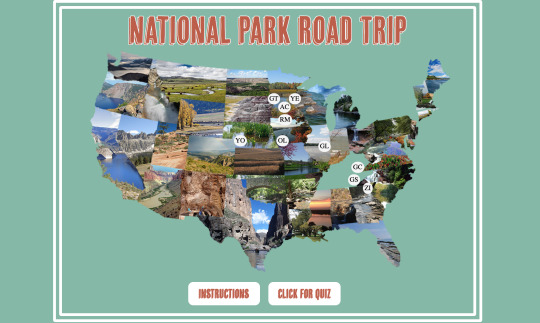
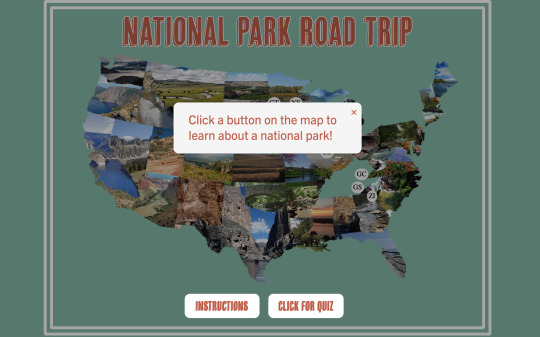


Final Coded Site

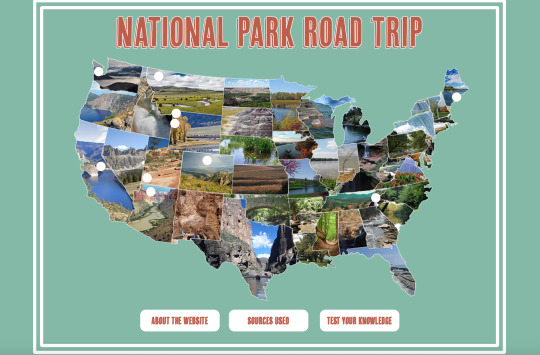
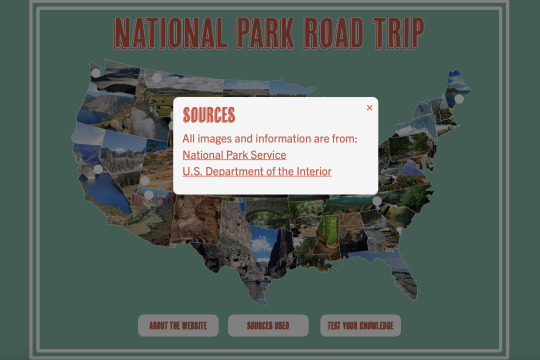
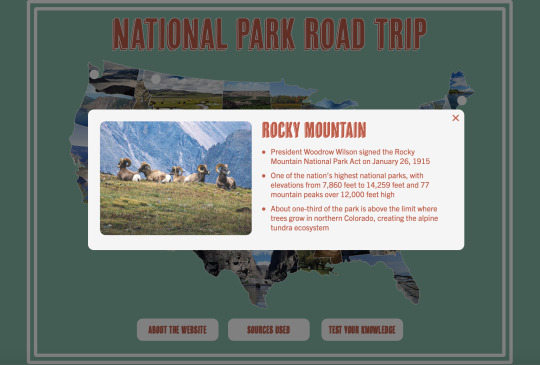

1 note
·
View note
Text
Letters to the editor — June 17, 2020
Several years ago, the Jamestown S'Klallam Tribe approached the City about the possibility of processing sewage from their reservation and tribal ...
from Google Alert - sewage https://www.google.com/url?rct=j&sa=t&url=https://www.sequimgazette.com/letters/letters-to-the-editor-june-17-2020/&ct=ga&cd=CAIyGmU0OWEzNWRjZTA0MTI3ZTg6Y29tOmVuOlVT&usg=AFQjCNGR7vKNSQInfbSji08d1BzBnUgoew
0 notes
Text
Letters to the editor — June 17, 2020
In response to Mr. Dundas' letter regarding the cost and fees for the Jamestown S'Klallam Tribe to connect to the Sequim wastewater treatment facility, ...
from Google Alert - sewage system https://www.google.com/url?rct=j&sa=t&url=https://www.sequimgazette.com/letters/letters-to-the-editor-june-17-2020/&ct=ga&cd=CAIyGjBmYTExMmY5ODc5OTYxMmI6Y29tOmVuOlVT&usg=AFQjCNGR7vKNSQInfbSji08d1BzBnUgoew
0 notes
Photo

I know that at some point in your life, that you have had that feeling. The one where you don't know why you are who you are, or who you are to become. You let your thoughts run deeper and deeper. You question everything and you try to hide. You try to hide in the world, thinking you won't screw up if you do it the same as everyone else. And then you forget that you were thinking about how the world is a beautiful place full of fucked up things. You forget why it matters. You go back to numbing that feeling and being brainwashed again. Not necessarily good or bad but just that it's happening. So go think, go find your special tree and just sit, relax, listen to yourself. Because sometimes you have to do something for yourself. So do it. 🌅🌲🌍 (at Jamestown S'Klallam Tribe)
0 notes
Photo



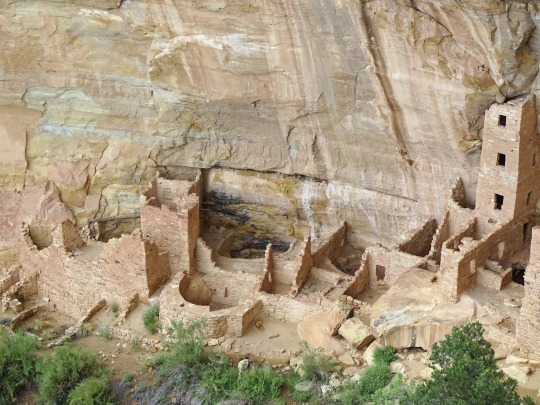



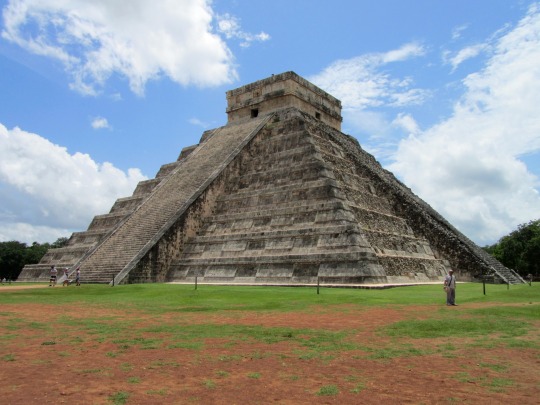


International Day of The World's Indigenous People
The International Day of the World’s Indigenous People on August 9 pays tribute to the indigenous communities of the world. The latest data reveals that there are about 370 to 500 million indigenous people living in 90 countries. These communities are noted to have their own unique set of languages, traditions, cultures, and governing systems. For many indigenous groups, the systems that their ancestors have followed for centuries have stood the test of time by serving them with positive outcomes to date. Many indigenous people’s special bond and connection with nature have also led to the protection of the general environment. However, on the other side, several indigenous communities face difficulties due to a central government’s covert and overt attempts to control their lives. This has led to indigenous people’s rights violations where they would have otherwise ensured peaceful and harmonious lives for them.
History of International Day of The World's Indigenous People
The first International Day of the World’s Indigenous People was officially celebrated in August 1995. The day had been brought into existence when the 49/214 resolution was passed by the U.N. General Assembly on December 23, 1994. August 9 was chosen as the commemorative date because that was when the first meeting of the U.N. Working Group on Indigenous Populations of the Sub-Commission on the Promotion and Protection of Human Rights was held. Every year, the day is honored by governments and organizations holding education forums and conferences to meet and discuss the social issues faced by indigenous groups worldwide. People are also given information on any ongoing and/or upcoming activities and projects that are being undertaken to help the target communities. Every year, the theme changes to shed light on a pressing topic, and the theme for the year 2021 was ‘Leaving no one behind: Indigenous peoples and the call for a new social contract.’
The social contract theme is a call for accountability in the general populations’ interaction with the indigenous communities and their resources. Over the years, many indigenous groups have found themselves to be on a disadvantageous terrain in the face of urban development projects that have destroyed and denigrated their lands and territories. The central governments and builders involved in such projects never sought permission from or even spoke with the indigenous communities before they took the developmental steps. Organizations and agencies like the U.N. and UNESCO have made efforts for constitutional/legislative reforms for dominant indigenous groups. Yet, the efforts must be focussed on bringing everyone together in the cause, leaving none behind.
International Day of The World's Indigenous People timeline
1982 First U.N. Meeting on Indigenous People
The U.N. holds the first meeting on indigenous people by forming the U.N. Working Group on Indigenous Populations of the Sub-Commission on the Promotion and Protection of Human Rights.
1995 International Day of the World’s Indigenous People
The first International Day of the World’s Indigenous People is celebrated by the U.N. General Assembly.
2005 - 2015 Indigenous People’s Decade
The U.N. proclaims 2005 to 2015 to be the ‘Decade of Action and Dignity’ for the indigenous communities.
2019 Indigenous Languages Year
After a startling 2016 report on the danger of more than 2,000 indigenous becoming extinct, the U.N. declares 2019 to be the International Year of Indigenous Languages in order to create awareness.
How To Observe International Day of the World’s Indigenous People
Learn about indigenous groups
Learn an indigenous language
Stand by indigenous groups
History related to indigenous people is always interesting to read and learn about. They have their own sets of beliefs, customs, languages, and cultures. Their daily lifestyles are also often connected with nature, be it animals, trees, certain plants, or lakes/rivers.
The U.N. declared the years 2022 to 2032 the decade for indigenous languages. The goal is to bring to attention the dying languages, since most of them are not taught in schools or are used by the general public. Losing a language is losing an important facet of the history and culture of a people.
The best way to celebrate this day and the rest of the year is by vowing to stand by indigenous groups. The indigenous people have the right to freely choose however they wish to live, much like any other living being on this planet. Protecting their rights also in turn protects your rights in the long run.
5 Interesting Facts About Indigenous People
80% of the world’s biodiversity
4,000 indigenous languages
High poverty rates
Short life spans
Leaders in protecting the environment
Around 80% of the world’s biodiversity is in places where indigenous groups are living.
The 5,000 indigenous communities in the world are credited with having about 4,000 languages.
While the indigenous communities account for only 5% of the world’s population, they make up 15% of the world population that is living in poverty.
Indigenous communities, due to a lack of awareness, have shorter life spans as they die of preventable diseases like malaria and H.I.V.
Studies have shown that the fauna and flora, and biodiversity thrive and flourish where indigenous people reside.
Why International Day of the World’s Indigenous People is Important
It’s a celebration of indigenous people
It’s a celebration of indigenous languages
It’s a celebration of the freedom to live
Indigenous people form an essential and crucial part of not only our planet’s history, but also how human beings have come to make systems to lead fruitful lives. The indigenous people’s cultures, customs, and traditions are interesting to learn about for their uniqueness and for what they teach us about the universe and the bigger picture.
Language, at its core, builds the identity of a people. The involvement of the different phonetics, grammar rules, and formal/informal styles can tell one a lot about where a community has come from, and how their history has shaped them. The same is the case with indigenous languages. The problem lies in their endangerment, and this is why we must strive to preserve them.
The freedom to practice our rights on a piece of land that has shaped our communities for centuries should not be taken away from anyone. The freedom to practice our customs, traditions, and general lifestyles is another important aspect of living a worthwhile life. For these very reasons and many others, we should join indigenous people in their right to live and flourish however they like.
Source
#Native American flute#Monument Valley Navajo Tribal Park#Arizona#USA#Dinosaur National Monument#Diné#Mesa Verde National Park#Colorado#Square Tower House#Jamestown S'Klallam Tribe#Wabanki Canoe#Mexico#Chichén Itzá#The Gather-Ring by Manuel Báez and Charlynne Lafontaine#Ottawa#Cliff Palace#original photography#tourist attraction#landscape#International Day of The World's Indigenous People#9 August#Canada#jingle dance#DayOfTheWorldsIndigenousPeople
5 notes
·
View notes
Photo

Yaya at Jamestown S'Klallam #sequim #sequimphotographer #pnw #olympicpeninsula #straitofjuandefuca #pnwphotography #seattle #photographer #nativeamerican #orca #sculpture #usa #washingtonstate #washingtoncounty (à Jamestown S'Klallam Tribe)
#sequim#washingtoncounty#photographer#orca#sculpture#usa#sequimphotographer#straitofjuandefuca#washingtonstate#nativeamerican#pnw#olympicpeninsula#seattle#pnwphotography
0 notes
Link
Commerce Secretary Pritzker declares fisheries disasters for nine West Coast species | National Oceanic and Atmospheric Administration In Alaska: Gulf of Alaska pink salmon fisheries (2016) In California: California Dungeness and rock crab fishery (2015-2016) Yurok Tribe Klamath River Chinook salmon fishery (2016) In Washington: Fraser River Makah Tribe and Lower Elwha Klallam Tribe sockeye salmon fisheries (2014) Grays Harbor and Willapa Bay non-treaty coho salmon fishery (2015) Nisqually Indian Tribe, Jamestown S'Klallam Tribe, Port Gamble S'Klallam Tribe, and Squaxin Island Tribe South Puget Sound salmon fisheries (2015) Quinault Indian Nation Grays Harbor and Queets River coho salmon fishery (2015) Quileute Tribe Dungeness crab fishery (2015-2016) Ocean salmon troll fishery (2016)
0 notes
Text
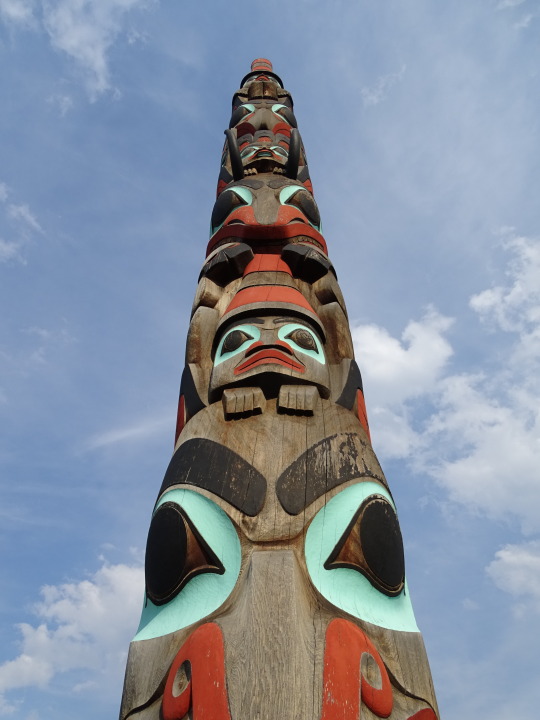




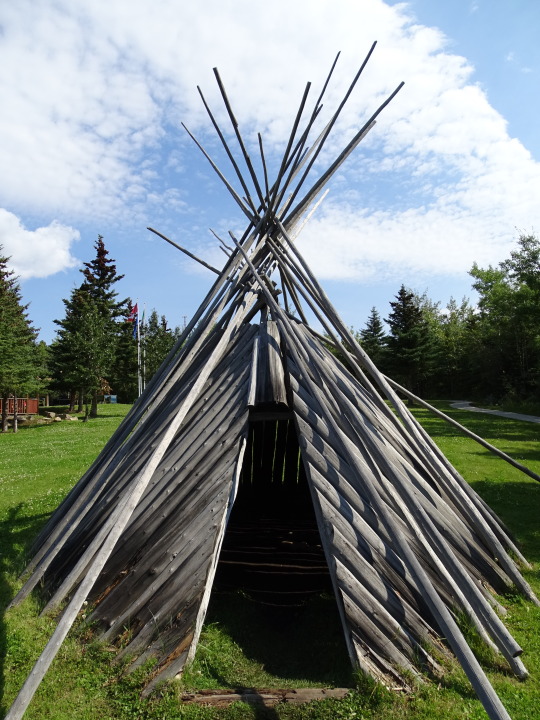





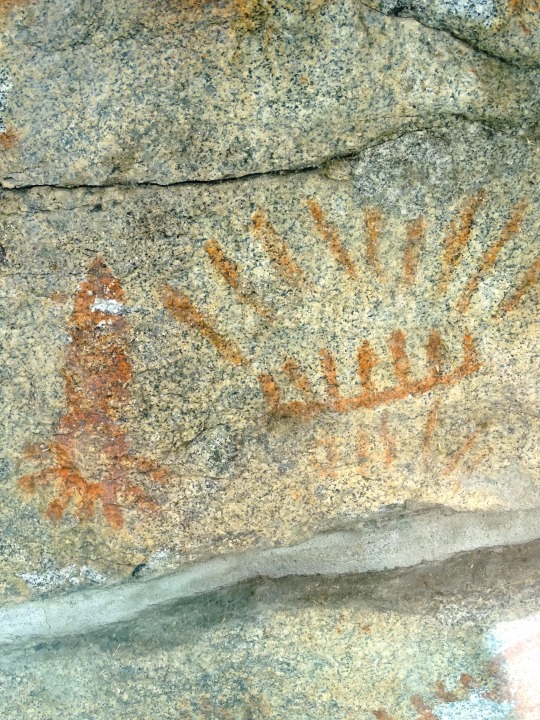
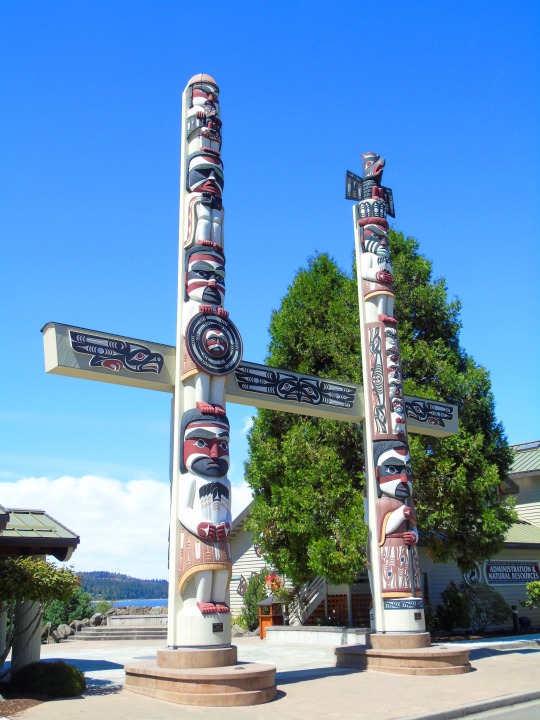










Indigenous Peoples’ Day/National Native American Day
Coming together to honor and learn from the rich heritage and wisdom of those who've lived on American soil for generations.
Appreciating and paying respect to the unique heritage and culture of those whose origins are native to the Americas, Indigenous Peoples’ Day offers the opportunity to honor, learn, celebrate and raise awareness.
History of Indigenous Peoples’ Day
Honoring Native American people throughout the United States, Indigenous Peoples’ Day was first officially celebrated in the US in 2021, when US President Joe Biden became the first president to formally recognize the day. However, the idea for the day goes back much further.
In 1977, the United Nations in Geneva, Switzerland sponsored the International Conference on Discrimination Against Indigenous Populations in the Americas. Part of the purpose was to begin celebrating Indigenous Peoples’ Day, particularly with the idea of replacing the adoration and glorification of Christopher Columbus with recognition and acknowledgement of the native peoples of the land.
Columbus Day, which is an American holiday, falls on the second Monday of October in the United States, has been less revered in recent years. This is likely due to the fact that the indigenous peoples of the time had their lands and lives taken away from them by the settlers from Europe, and the American people are becoming more aware of the way history has been written only from the perspective of the white person.
In exchange for Columbus Day, many people in the United States have begun the celebration of Indigenous Peoples Day instead. Coinciding with the 500th anniversary of the arrival of Christopher Columbus on American soil, a celebration of Indigenous Peoples’ Day was organized on October 12, 1992 in Berkeley, California. Many other cities and towns have accepted and implemented something similar in their communities, including places such as Los Angeles, California and Washington, DC.
At least twelve of the United States do not celebrate Columbus Day, and the state of South Dakota celebrates Native American Day instead. Tribal governments in Oklahoma have also made declarations regarding the celebration of Native American Day.
How to Celebrate Indigenous Peoples’ Day
A wide spectrum of ways for Americans to celebrate Indigenous Peoples’ Day can be discovered and created. Consider implementing some of these ideas in honor of the day, or come up with some of your own clever ideas:
Attend an Indigenous Peoples’ Day Event
Those who have a family history as a Native American or other indigenous people should certainly take this time to celebrate their heritage! And those who don’t can definitely take the opportunity to support and enjoy learning more.
For people who live in certain places where the populations of indigenous peoples groups are strong, like Arizona, California, Oklahoma, South Dakota and many other states, it is likely that some exciting events, educational programs and celebrations will be on the calendar! Join in on a parade, learn a native craft, or listen to a lecture on history.
Even better, brush up on current events of the indigenous peoples in the local area to see what ways it is possible to learn more about their plight, make a donation or even act as an advocate to raise awareness in the community.
Re-Learn United States History
With the recognition that history over the first 200 years of the United States was written from the perspective of the white person, perhaps National Indigenous Peoples’ Day would be a time, especially for white Americans, to consider a different perspective. Get beyond what was taught in school and get educated on how the story actually happened before the territory of what is now the United States was settled.
Read some books, watch some documentaries and do some research on websites to find out more. Consider some of these books for getting more educated:
An Indigenous Peoples’ History of the United States by Roxanne Dunbar-Ortiz
Lies My Teacher Told Me: Everything Your American History Book Got Wrong by James W. Loewen
The People: A History of Native America by R. David Edmunds
A True History of the United States: Indigenous Genocide, Radicalized Slavery, Hyper-Capitalism, Militarist Imperialism and Other Overlooked Aspects of American Exceptionalism by Daniel Sjursen
Support an Indigenous People Artist or Community
Often revered for their creativity and attention to detail, many indigenous people tribes produce artwork and handicrafts that are valuable and beautiful. Consider making a trip to a place that supports the arts of native peoples and make a purchase of pottery, blankets, jewelry, painting or some other amazing piece of art to add to your collection.
Visit an Indigenous Peoples’ Museum
Take the hands-on approach to learning more about the people who first inhabited the Americas by visiting a museum or exhibit dedicated to their culture and people. Try out one of these or visit one more local to the area:
Museum of Indigenous People (formerly the Smoki Museum). Located in Prescott, Arizona, this museum works to instill understanding and respect for the people of indigenous cultures, particularly those in the southwestern parts of the United States. The museum holds events, offers membership and even hosts a consignment market.
National Museum of the American Indian. This Smithsonian museum boasts two locations, one in the Washington DC mall and one in New York City. They offer access to various collections and exhibits as well as educational programs, online resources, and presentations with the intent to pay respect and honor to the native and indigenous peoples of the Americas.
Heard Museum. Situated in a vitally important place for Native Americans, this Phoenix, Arizona location focuses on the tribes and people of the Southwest. Exhibitions include handicrafts such as weaving and textiles as well as jewelry, clothing and more. Ages range from prehistoric to contemporary and everything in between. The Heard Museum is also the place where the World Hoop Dance Championship takes place each year!
The Eiteljorg Museum. Located in the center of Indianapolis, Indiana, this museum showcases paintings, sculptures, weaving, pottery, artifacts and even evidence of storytelling. With festivals, educational programs, events and even an annual Indian market, this museum is a fun one to visit and learn.
Source
#survivors of Whitehorse Indian Mission School by Ken Anderson#Finding Peace Monument by Halain De Repentigny#The Gather-Ring by Manuel Báez and Charlynne Lafontaine#Native American flute#Monument Valley Navajo Tribal Park#USA#Diné#Mesa Verde National Park#Jamestown S'Klallam Tribe#Wabanki Canoe#Ottawa#original photography#tourist attraction#landscape#Canada#jingle dance#Whitehorse#Wickiup#Grande Cache#rock painting#petroglyphs#travel#vacation#landmark#cityscape#Jasper National Park#Holbrook#Vancouver#Montezuma Castle National Monument#First Nations
1 note
·
View note
Photo







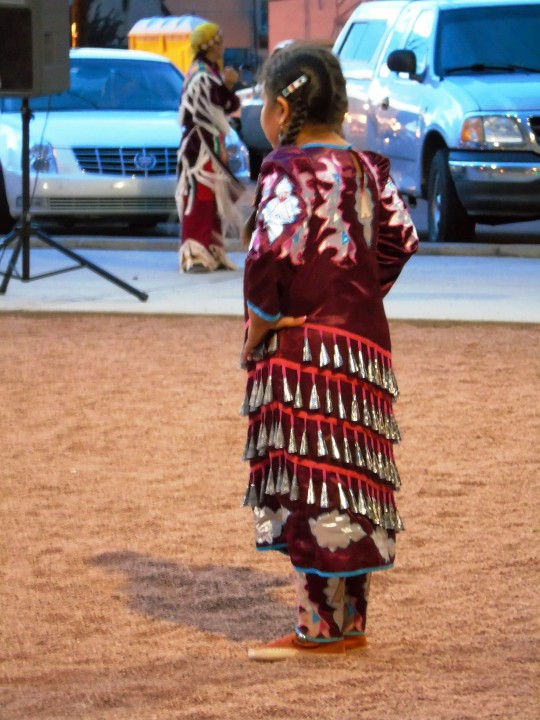
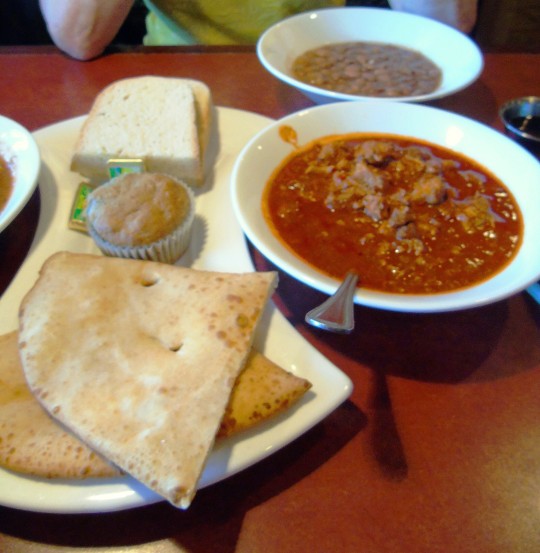

Indigenous Peoples’ Day
Appreciating and paying respect to the unique heritage and culture of those whose origins are native to the Americas, Indigenous Peoples’ Day offers the opportunity to honor, learn, celebrate and raise awareness.
History of Indigenous Peoples’ Day
Honoring Native American people throughout the United States, Indigenous Peoples’ Day was first officially celebrated in the US in 2021, when US President Joe Biden became the first president to formally recognize the day. However, the idea for the day goes back much further.
In 1977, the United Nations in Geneva, Switzerland sponsored the International Conference on Discrimination Against Indigenous Populations in the Americas. Part of the purpose was to begin celebrating Indigenous Peoples’ Day, particularly with the idea of replacing the adoration and glorification of Christopher Columbus with recognition and acknowledgement of the native peoples of the land.
Columbus Day, which is an American holiday, falls on the second Monday of October in the United States, has been less revered in recent years. This is likely due to the fact that the indigenous peoples of the time had their lands and lives taken away from them by the settlers from Europe, and the American people are becoming more aware of the way history has been written only from the perspective of the white person.
In exchange for Columbus Day, many people in the United States have begun the celebration of Indigenous Peoples Day instead. Coinciding with the 500th anniversary of the arrival of Christopher Columbus on American soil, a celebration of Indigenous Peoples’ Day was organized on October 12, 1992 in Berkeley, California. Many other cities and towns have accepted and implemented something similar in their communities, including places such as Los Angeles, California and Washington, DC.
At least twelve of the United States do not celebrate Columbus Day, and the state of South Dakota celebrates Native American Day instead. Tribal governments in Oklahoma have also made declarations regarding the celebration of Native American Day.
How to Celebrate Indigenous Peoples’ Day
A wide spectrum of ways for Americans to celebrate Indigenous Peoples’ Day can be discovered and created. Consider implementing some of these ideas in honor of the day, or come up with some of your own clever ideas:
Attend an Indigenous Peoples’ Day Event
Those who have a family history as a Native American or other indigenous people should certainly take this time to celebrate their heritage! And those who don’t can definitely take the opportunity to support and enjoy learning more.
For people who live in certain places where the populations of indigenous peoples groups are strong, like Arizona, California, Oklahoma, South Dakota and many other states, it is likely that some exciting events, educational programs and celebrations will be on the calendar! Join in on a parade, learn a native craft, or listen to a lecture on history.
Even better, brush up on current events of the indigenous peoples in the local area to see what ways it is possible to learn more about their plight, make a donation or even act as an advocate to raise awareness in the community.
Re-Learn United States History
With the recognition that history over the first 200 years of the United States was written from the perspective of the white person, perhaps National Indigenous Peoples’ Day would be a time, especially for white Americans, to consider a different perspective. Get beyond what was taught in school and get educated on how the story actually happened before the territory of what is now the United States was settled.
Read some books, watch some documentaries and do some research on websites to find out more. Consider some of these books for getting more educated:
An Indigenous Peoples’ History of the United States by Roxanne Dunbar-Ortiz
Lies My Teacher Told Me: Everything Your American History Book Got Wrong by James W. Loewen
The People: A History of Native America by R. David Edmunds
A True History of the United States: Indigenous Genocide, Radicalized Slavery, Hyper-Capitalism, Militarist Imperialism and Other Overlooked Aspects of American Exceptionalism by Daniel Sjursen
Support an Indigenous People Artist or Community
Often revered for their creativity and attention to detail, many indigenous people tribes produce artwork and handicrafts that are valuable and beautiful. Consider making a trip to a place that supports the arts of native peoples and make a purchase of pottery, blankets, jewelry, painting or some other amazing piece of art to add to your collection.
Visit an Indigenous Peoples’ Museum
Take the hands-on approach to learning more about the people who first inhabited the Americas by visiting a museum or exhibit dedicated to their culture and people. Try out one of these or visit one more local to the area:
Museum of Indigenous People (formerly the Smoki Museum). Located in Prescott, Arizona, this museum works to instill understanding and respect for the people of indigenous cultures, particularly those in the southwestern parts of the United States. The museum holds events, offers membership and even hosts a consignment market.
National Museum of the American Indian. This Smithsonian museum boasts two locations, one in the Washington DC mall and one in New York City. They offer access to various collections and exhibits as well as educational programs, online resources, and presentations with the intent to pay respect and honor to the native and indigenous peoples of the Americas.
Heard Museum. Situated in a vitally important place for Native Americans, this Phoenix, Arizona location focuses on the tribes and people of the Southwest. Exhibitions include handicrafts such as weaving and textiles as well as jewelry, clothing and more. Ages range from prehistoric to contemporary and everything in between. The Heard Museum is also the place where the World Hoop Dance Championship takes place each year!
The Eiteljorg Museum. Located in the center of Indianapolis, Indiana, this museum showcases paintings, sculptures, weaving, pottery, artifacts and even evidence of storytelling. With festivals, educational programs, events and even an annual Indian market, this museum is a fun one to visit and learn.
Source
#Monument Valley Navajo Tribal Park#Mesa Verde National Park#vacation#USA#Native American history#Indigenous Peoples’ Day#10 October 2022#second Monday in October#IndigenousPeoplesDay#original photography#travel#petroglyphs#Dinosaur National Monument#Jamestown S'Klallam Tribe#Navajo#Diné#Wabanki Canoe#Klahowya Village#Montezuma Castle National Monument#architecture#tourist attraction
1 note
·
View note
Photo
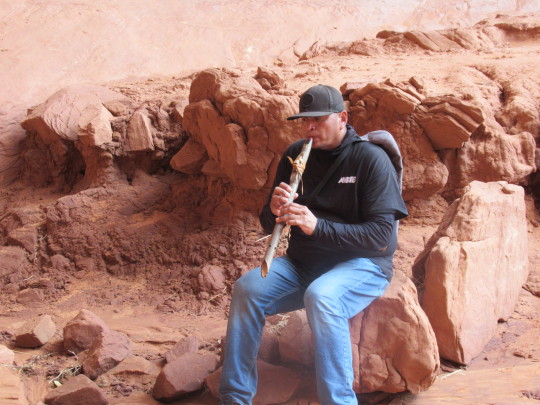
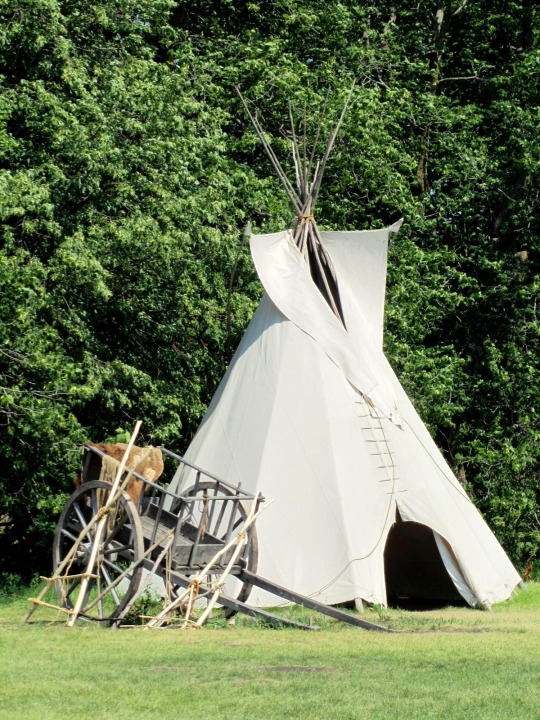



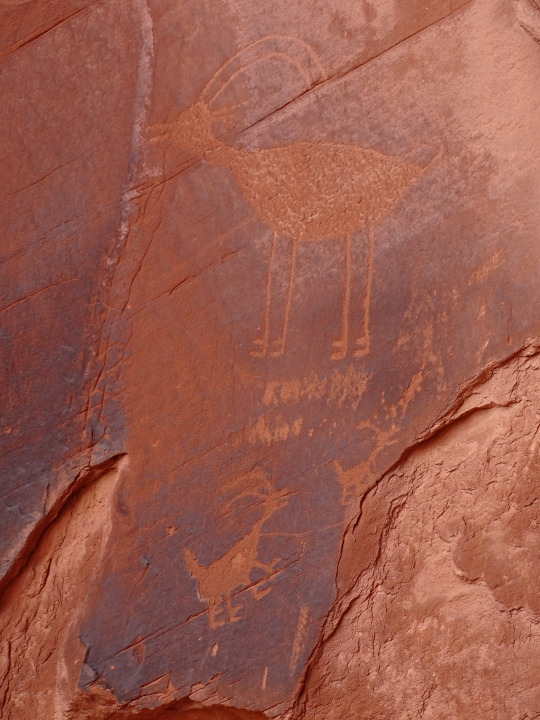



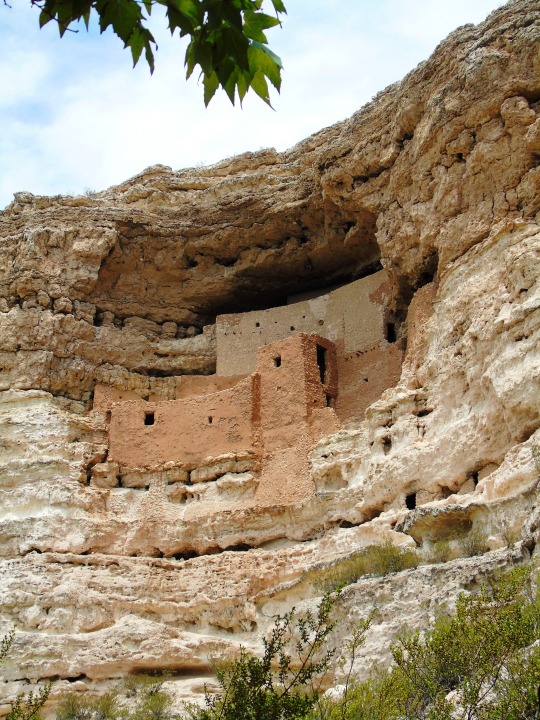
Native American Day
Learn about the rich cultures of Native American tribes in your area. Support modern tribes by educating others, buying goods, and participating in events.
Native Americans have been a part of the American tradition even before the United States began. However, due to hundreds of years of persecution, much isn’t left of the neighboring tribes and many have integrated into modern society.
Those still in touch with their culture, however, will remember these events and want people to remember it. Native American Day is a holiday aimed at changing the way people view Native Americans.
Learn about Native American Day
As the name indicates, Native American Day pays honor to Native Americans. They are thought to be the first Americans to populate and live in the United States. North Americans had populated the entire North American continent before the first explorers and settlers from Europe came. This was all of the way from the Pacific to the Atlantic, as well as from the northern reaches of Canada to the Gulf of Mexico. It goes without saying that Native Americans play a huge part in the history of the United States, and so it is only right that there is a date to honor them.
This is a day that is celebrated across the United States. It can be celebrated on different dates depending on where in the United States you are based, so it is worth keeping this in mind. For example, in Wisconsin and South Dakota, it falls on the second Monday in October.
However, in Nevada and California, the date is celebrated on the fourth Friday in September. No matter where it is celebrated, though, it is all about paying honor to Native American communities and the cultural contributions they have made to the history of each state and the country as a whole.
The observance of Native American Day focuses on a celebration of the history, heritage, and culture of tribes across the United State. Each diverse nation has its own beliefs, rituals, and traditions. This day is about celebrating the enriching heritage, contributions, and knowledge of Native Americans.
It also serves as a great reminder of their enduring legacy of fortitude, energy, and strength. I think most people would agree that we do not always take enough time to sit back and reflect on what our ancestors have contributed to the world that we live in.
History of Native American Day
Native Americans were around long before the Europeans decided to colonize and take over the wild forests and plains of the United States. But while many people consider the Native Americans to be a long-forgotten tradition, Native Americans have a steep root in culture and history that has been cultivating for thousands of years.
From the Inuit tribes of Alaska, the Seneca nations of the Northeast, the Cherokees of the South, to the Navajo of the Southwest, Native Americans exist everywhere with different cultural traditions and hundreds of dialects in their languages. By the time Europeans traveled to America during the 15ht century, over 50 million Native Americans lived throughout the continent.
Native American Day is about appreciating the long history of culture and traditions that Native Americans have preserved throughout time. The holiday is celebrated in states such as South Dakota and California. Native American Day was originally called “American Indian Day” when Govoner Ronald Reagan signed a resolution calling for a change in 1968.
Native American Day was officially declared a state holiday in 1998, and South Dakota proclaimed the year 1990 as a year of reconciliation between Native Americans and Caucasian populations, eventually changing Colombus Day to Native American Day. People celebrate this holiday by learning about the different kinds of tribes and cultures that persisted among all odds during what many Natives consider as their genocide.
How to celebrate Native American Day
Honor Native American cultures by learning about the tribes of your local area. Be respectful of their traditions and take the time to learn of their history. If you stand against the holiday Colombus Day, petition your congressman to change the celebration of that holiday for your state.
Help educate people about the cultures and traditions of the Native Americans by sharing this information with others. Advocate and support the Native Americans in their expression of their culture and help protect their rights by standing with them as an ally.
We would recommend taking a look at the events that are happening in your local area to see whether there is anything that you can join in with. As mentioned, there are differences in terms of events and celebrations depending on where in the United States you are based. For example, let’s start by taking a look at South Dakota. In South Dakota, the day is celebrated by using educational resources to focus on the background, culture, and traditions of Native Americans. It is about sharing many aspects of native culture, whether you are a native or not.
There are also a lot of celebrations that occur throughout different parts of California. In Berkeley, for instance, there are some churches, community groups, and organizations that will support Native American Day by carrying out activities that are focused on raising awareness about the traditions, culture, and history of the indigenous people in the U.S. Some of the cultural activities include the likes of pow wows and markets. Pow wows, for those who are unaware, are gatherings of indigenous people from North America. In modern times, these get-togethers involve celebrating Native American culture, socializing, singing, and dancing.
Source
#Mesa Verde National Park#Colorado#Monument Valley Navajo Tribal Park#petroglyphs#Diné#Native American flute#Klahowya Village#USA#Canada#original photography#traditional Wabanki Canoe#Founding Fathers by Dale Faulstich#Jamestown S'Klallam Tribe#Montezuma Castle National Monument#Native American Day#fourth Friday in September#23 September 2022#NativeAmericanDay#First Nations
1 note
·
View note
Photo

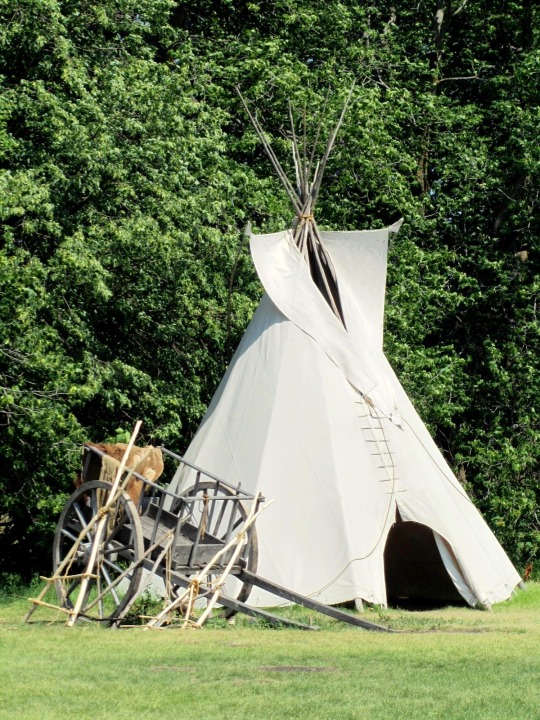



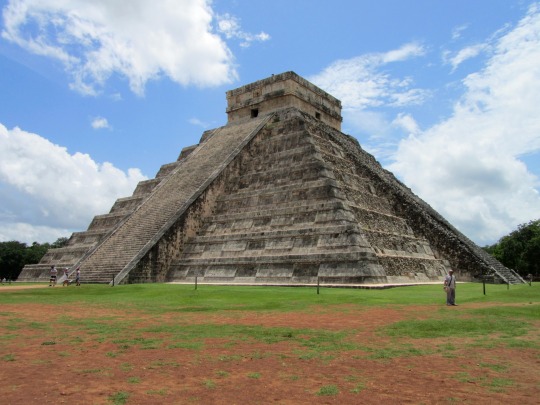

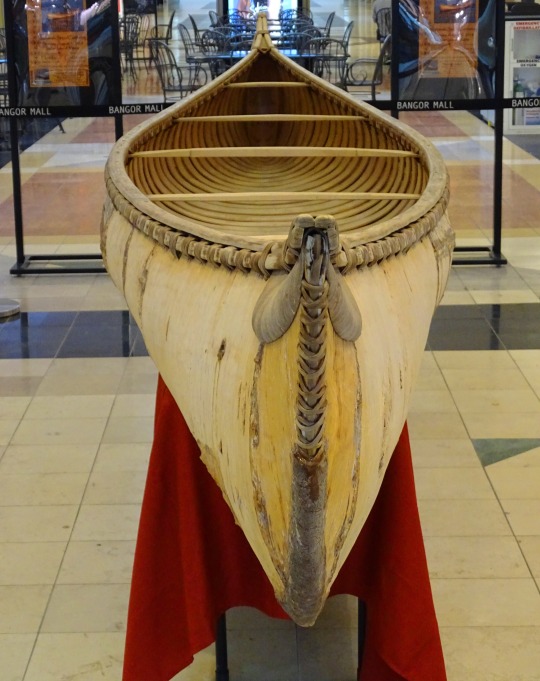

International Day of the World’s Indigenous People
There are an estimated 370 million indigenous people in the world, living across 90 countries. They make up less than 5 per cent of the world’s population, but account for 15 per cent of the poorest. They speak an overwhelming majority of the world’s estimated 7,000 languages and represent 5,000 different cultures.
Indigenous peoples are inheritors and practitioners of unique cultures and ways of relating to people and the environment. They have retained social, cultural, economic and political characteristics that are distinct from those of the dominant societies in which they live. Despite their cultural differences, indigenous peoples from around the world share common problems related to the protection of their rights as distinct peoples.
Indigenous peoples have sought recognition of their identities, their way of life and their right to traditional lands, territories and natural resources for years, yet throughout history their rights have always been violated. Indigenous peoples today, are arguably among the most disadvantaged and vulnerable groups of people in the world. The international community now recognizes that special measures are required to protect their rights and maintain their distinct cultures and way of life.
In order to raise awareness of the needs of these population groups, every 9 August commemorates the International Day of the World’s Indigenous Peoples, chosen in recognition of the first meeting of the UN Working Group on Indigenous Populations held in Geneva in 1982.
Source
#International Day of the World’s Indigenous People#9 August#Vancouver#InternationalDayOfTheWorldsIndigenousPeople#Canada#USA#travel#BC#Lower Fort Garry National Historic Site of Canada#Navajo#Mexico#Chichén Itzá#Montezuma Castle National Monument#original photography#Anishinaabe Scout by Hamilton MacCarthy#Ottawa#Bangor#Wabanki Canoe#Jamestown S'Klallam Tribe#Founding Fathers by Dale Faulstich
41 notes
·
View notes